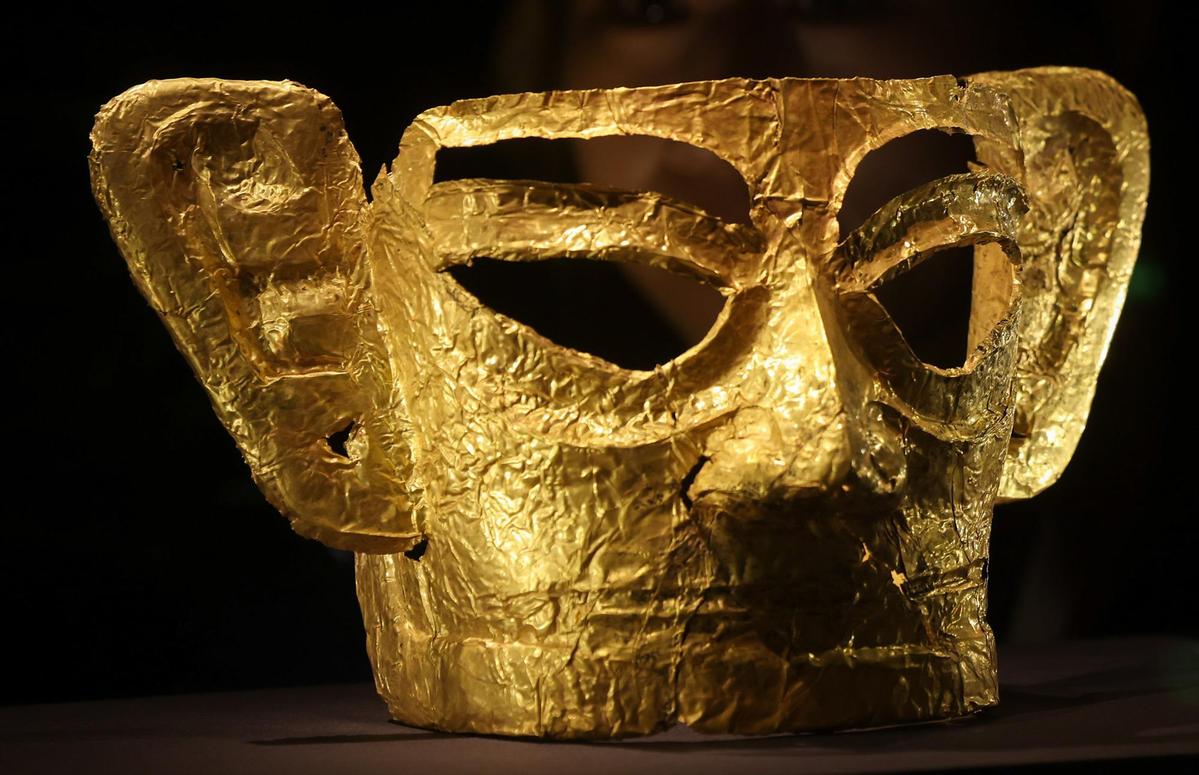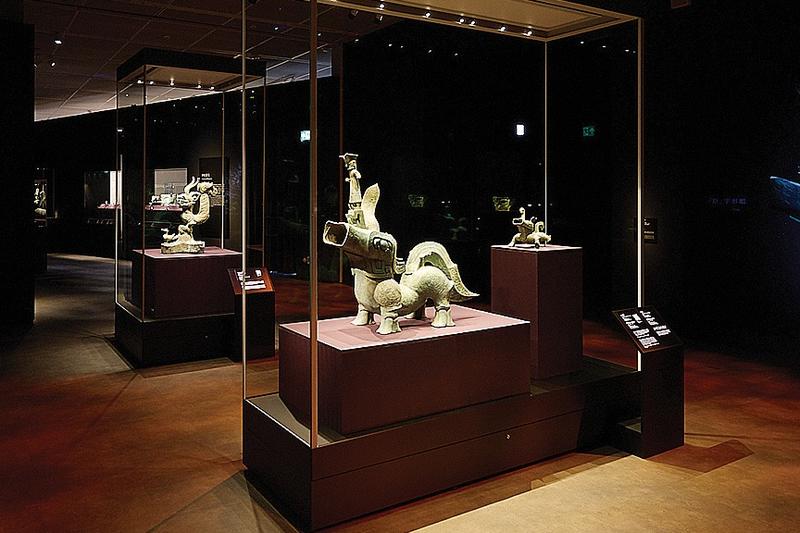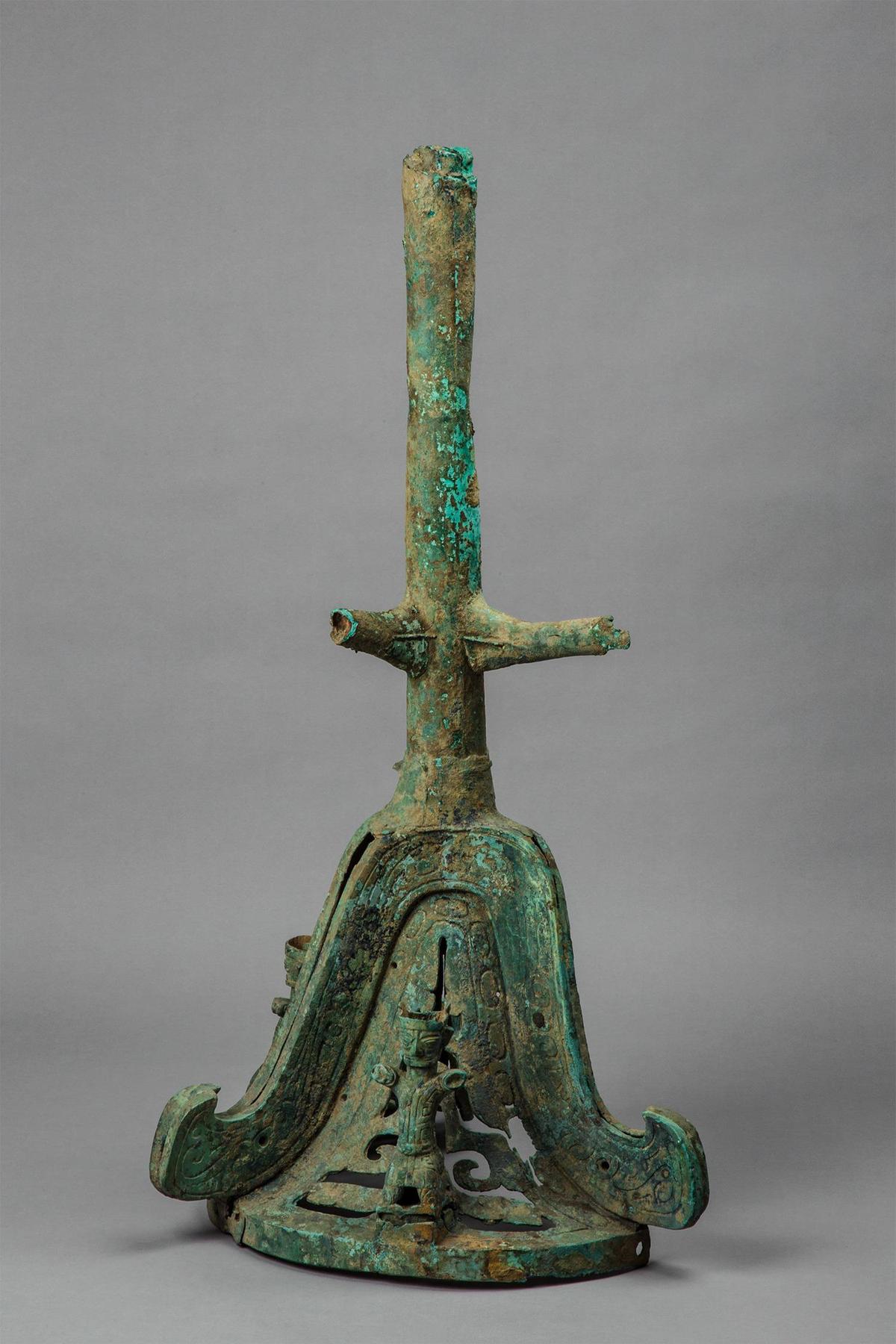Welcome to gochengdu.cn!
You need to accept our privacy and cookie policy to continue to browse our website. You can change your cookie settings through your browser.

A huge cache of historical relics, unearthed from the excavation site at Sanxingdui in China's Sichuan province, is on view at the Hong Kong Palace Museum (HKPM). Gazing at Sanxingdui: New Archaeological Discoveries in Sichuan comprises 120 artefacts in bronze, jade and gold, and includes items that are roughly 3,000 to 3,200 years old. Nearly half of the exhibits were discovered during excavations conducted from 2020 to 2022.

The largest gold mask unearthed in Sanxingdui
Bearing the hallmarks of the distinct Sanxingdui craftsmanship - oversized ears, exaggerated facial features, and mysterious patterns inscribed on the surface - the exhibits are expected to shed light on the religious customs of the ancient Shu civilization (circa 1046-316 BC), which covered the Chengdu plain, a fertile tract of land located in the southwestern part of the Sichuan basin.

The bronze figures of Sanxingdui are known for their tall and slender frames and exaggerated facial features. The objects missing from their clasped hands remain a mystery
According to Wang Yi, deputy director of the Sichuan Provincial Department of Culture and Tourism and director of Sichuan Provincial Cultural Heritage Administration, the relics serve as evidence of cultural exchanges between the ancient Shu kingdom and the rest of the country, including Hong Kong. For example, one of the exhibits, Bronze Figure with Animal Headdress (1200-1050 BC), depicts a hand gesture that resonates with figurines unearthed in Lamma Island in the 1990s.

Installation view of the Gazing at Sanxingdui: New Archaeological Discoveries in Sichuan exhibition at the Hong Kong Palace Museum
The Sanxingdui relics demonstrate that a multitude of cultural influences has shaped the Chinese civilization, "giving rise to a rich tapestry of regional variations," says Lam Weng-cheong, associate professor at the departments of history and anthropology at the Chinese University of Hong Kong. At the same time, they help highlight the fact that there are underlying commonalities that unite these diverse strands," he said.

One of the three kneeling figures unearthed from Sanxingdui. Its tall hairdo, together with that of the others, might have supported a larger object
The HKPM exhibition is divided into four sections: Timeless Gaze, Urban Life at Sanxingdui, Gods and Shamans at Sanxingdui, and The Origins and Inheritance of Sanxingdui. The first features a collection of bronze heads, masks and idols.

Bronze tree stands with a mound-shaped base. The ring nobs on its branches might have been used to hang accessories
While the Shu kingdom lasted until 316 BC, the ancient metal workshops of Sanxingdui seem to have stopped production around 1150 BC. Lam points out that a mix of copper, tin and lead was used to make the sculptures, and maintaining a supply of three different minerals might have posed a challenge. Melting these minerals to form an alloy with a malleability that was suitable for sculpting could not have been easy either.

Bronze head with gold mask, possibly denoting a high-ranking official with secular power
Historians agree that several aspects of the Sanxingdui story remain shrouded in mystery. A plethora of questions related to the customs, traditions, lifestyle practices, and rituals of worship remain unanswered. Hopefully, the priceless artefacts from Sanxingdui now on show in Hong Kong will spur some of the viewers into finding out more about the ancient societies of Sichuan.
Source: China Daily
Image source: CALVIN NG / China Daily